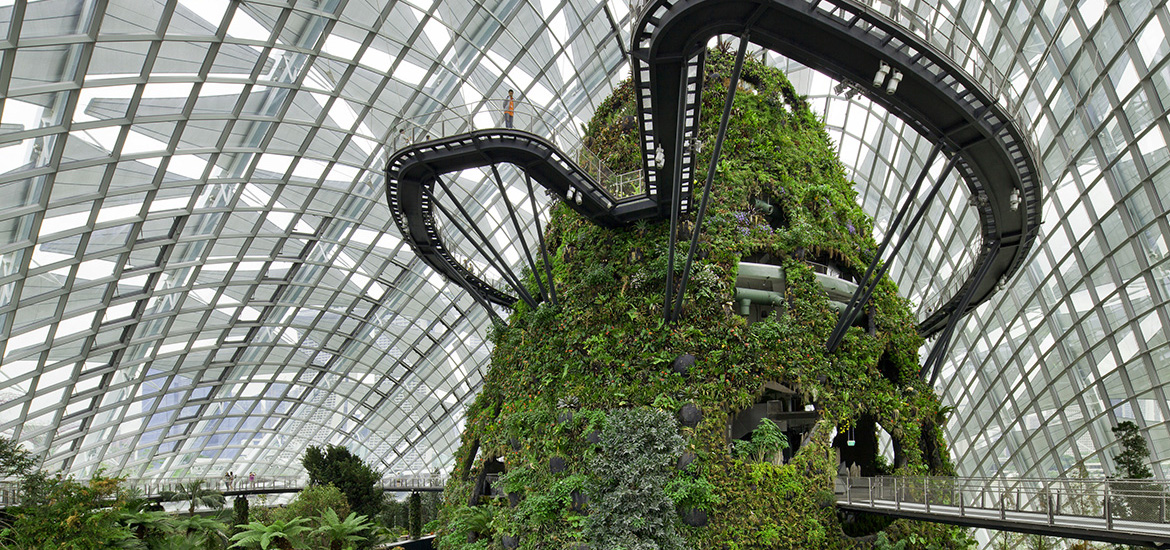Sustainability is a key aspect of many industries trying their hand at innovative products and services. From lifestyle products such as toothbrushes, skincare, soaps, and kitchen utilities to living and public spaces—sustainability is slowly becoming a part of our everyday lives. And the construction industry isn’t too far behind!
Companies, such as Sorg Design, are bringing sustainable architecture into mainstream practices, changing the way buildings and cities are built. As a result, not only is the craft of building design being challenged, but they are also reducing the overall impact these structures have on the environment.
What Is Sustainable Architecture?
Sustainable architecture refers to healthy living spaces that minimize their impact on the environment through integrated features. These practices involve resource management, altered construction methods, use of alternative construction materials, innovative designs, integration of sustainable energy resources, and more.
The catch? While it’s highly functional and technical, green architects leave behind no chances to make these buildings aesthetically pleasing.
Interesting, right? We’ve put together a list of some fantastic ways these structures help the overall country’s development. Keep reading!
Low Maintenance
These buildings constitute unique features designed to help save water and energy. For instance, the structure of certain green buildings is in the ‘zig-zag’ shape to allow maximum light to reach each corner of the structure. This helps reduce the need for light bulbs, helping in cutting maintenance costs by a considerable margin. Additionally, each space often has multiple uses, reducing the overall maintenance required for the non-green areas.

Energy Efficient
Green architecture prioritizes using clean energy sources to reduce dependency on non-renewable resources such as coal and natural gas. Clean sources of energy can include solar panels, windmills, water turbines, etc. Green architecture is such that these clean resources are integrated into the building designs to make upkeep easy without destroying the overall look and appeal of the building. For instance, solar panels are fit into designer windows for efficient energy absorption.
They may also make use of recycled or harvested water for washrooms to use water in the building efficiently.
Clean Material Usage
Certain construction materials require a lot of human resources and physical processes that can harm the surrounding environment during the construction. Hence, instead of compromising on the materials and the outcome, green architecture uses materials that require less processing and raw materials and are long-lasting and recyclable.
Enhances Surrounding Environment
With greenery surrounding the structure and a lesser load on the environment surrounding the living space, you’re bound to feel a difference! Clean energy use, better thermal conditions, and minimal waste generation help improve the air quality of the indoor and surrounding areas.
Low Installation Costs
Construction is a costly business. However, with efficient energy resources, materials that require fewer processes before use, better designs, and intelligent technology, sustainable structures can be erected at a surprisingly low cost with a better ROI.
Better Health
Green buildings are constructed to bring maximum natural benefits to their occupants. For instance, the design brings maximum natural sunlight and fresh air to your living space. Additionally, they incorporate greenery into the public areas. With buildings that use cleaner resources and construction that prioritize your health, you’re sure to feel better soon!
Minimal Waste Generation
Sustainable structures are designed for minimum waste generation at all times to lower their impact on the environment. With efficient resource usage and in-built recycling, these structures.do a great job at making sure to keep the environment clean. Additionally, construction with clean materials also produces less waste as opposed to harmful debris and burnt coal that general construction practices emit.
The sustainable construction industry is developing day by day, with unlimited opportunities for creative experimentation. Keeping an open mind for well-functioning innovative techniques and materials can bring ground-breaking results for our community.






